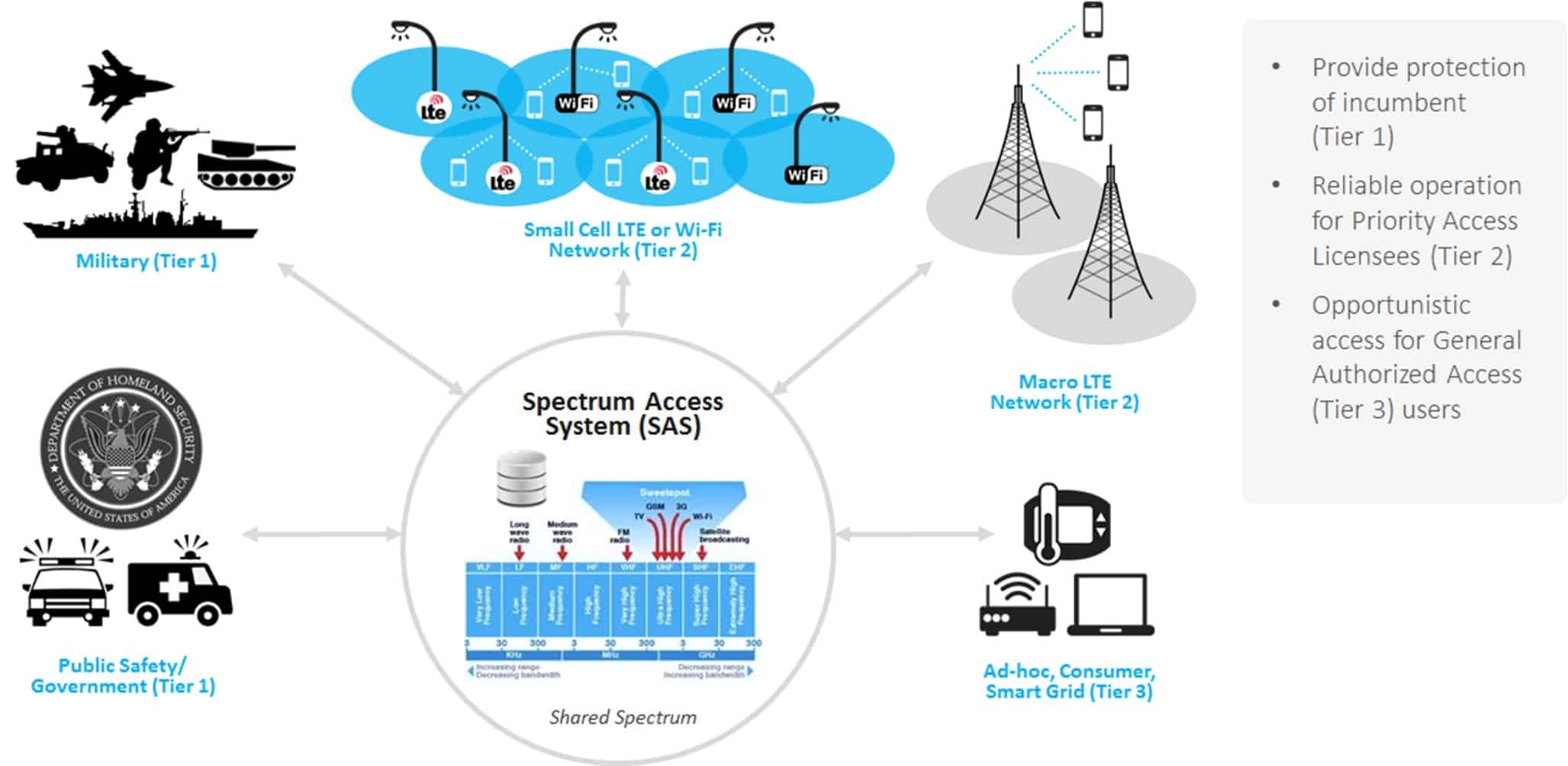The three-tier Citizens’ Broadband Radio Service (CBRS) in the US is the first well-defined initiative to allow spectrum to be shared across user groups. Rather than simply license the spectrum in a national auction or give it over to unlicensed use, the plan uses a mix of these and creates the possibility of networks run by new operators – either new entities or businesses looking to expand their offerings in the mobile space. But how likely is this? Will new players be attracted by CBRS, or will it simply be more spectrum for the incumbent operators?
The 3550-3650 MHz band, commonly referred to 3.5GHz, has the three tiers of access:
Tier 1 access is automatically granted to the government and military groups that already have access to this band.
Tier 2 is licensed, but this will work differently from other licenses. Up to seven blocks of spectrum per “census tract” (about the size of a small town) will be awarded to the highest bidders.
Tier 3 is “General Authorized Access”, where no license is required - similar to how Wi-Fi works.
Each tier is protected from interference by the tier below it by a Spectrum Allocation Service, so the military and government have priority over everyone and those who have paid for licenses have priority over general unlicensed access.
So who will apply for Tier 2 licenses?
One possibility is that these more granular, localised licenses will mean the creation of private networks that can take advantage of the lack of interference and the cheaper price tag. Enterprises with large campuses could create wireless networks for their own use. Large venues and shopping malls could use this band to offer wireless services to their customers.
However, these sorts of services will rely on device support to be viable. A lack of support may mean that the band will in fact mostly be used for specialist use cases – such as connected medical devices in a large hospital – that benefit from a private network but where owning a license would be previously cost-prohibitive.
There is a possibility that the 3.5GHz band will drive innovation and create services that are tailored to specific audiences, or have a limited geographic reach – and that operators from outside the established license holders will create these services.
So far, however, only established and specialist mobile companies have expressed an interest in this band. The exception is Alphabet – a company with a history of competing directly in the mobile and telecoms space. But it is still early and those who want to operate in this band may still yet make themselves known.
Tier 2 licenses will be renewed every three years, and will cost as much as people are willing to pay for them. The consequences of this could be complex. If the band becomes popular with a mix of established and new players, then the price of a license could rise beyond what is affordable for a local service. Anyone creating a ‘Tier 2’ service would need assurance that the Wi-Fi-like ‘Tier 3’ could still be viable.
The success of CBRS will depend on the success of smaller networks. One of the FCC’s stated goals with CBRS is to bring in new players and stimulate innovation and growth in the wireless sector, as well in the economy in general. For this to be viable, then it’s not only Tier 2 licenses that need to be attractive, but Tier 3. If incumbent mobile operators turn to CBRS to offload mobile traffic or provide more coverage in congested areas, their buying power will outstrip new players, leaving their services using a band available to all and with no protection against interference.
This is something that can be vastly improved with smart radio management – schemes that allocate CBRS channels intelligently to mitigate interference. These will be invaluable at Tier 3 where access is open, but also necessary for Tier 2 users to enable more efficient use of the spectrum available.
CBRS does have the potential to attract new players, but it the Spectrum Allocation Service to prevent interference from lower tiers is not enough. Anyone looking to make the most of CBRS, even with a Tier 2 license, needs to treat intelligent radio management as seriously as operators do with cellular networks.




















